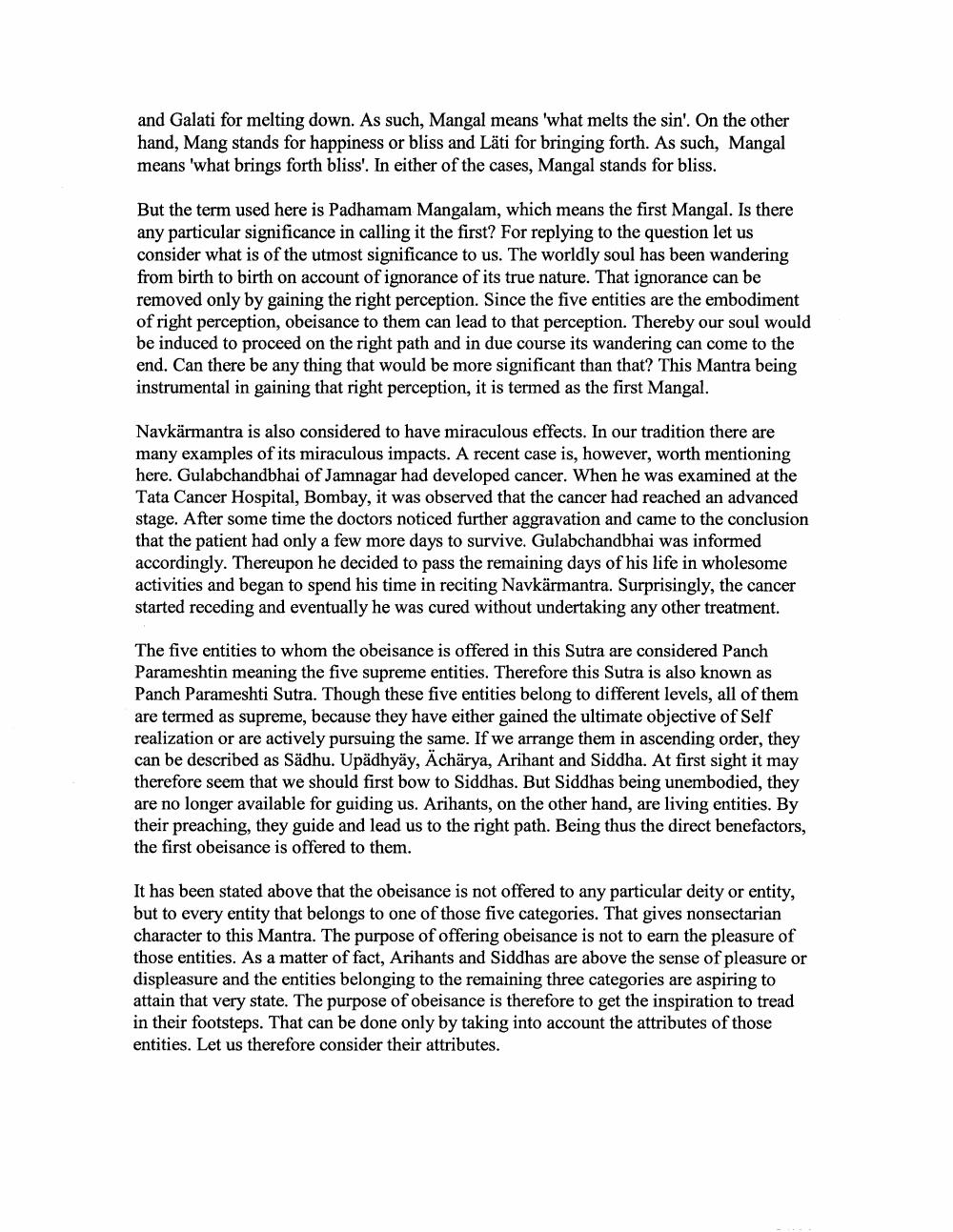Book Title: Samayik And Chaityavandan Vidhi Author(s): Manu Doshi Publisher: Manu Doshi View full book textPage 9
________________ and Galati for melting down. As such, Mangal means 'what melts the sin'. On the other hand, Mang stands for happiness or bliss and Läti for bringing forth. As such, Mangal means 'what brings forth bliss'. In either of the cases, Mangal stands for bliss. But the term used here is Padhamam Mangalam, which means the first Mangal. Is there any particular significance in calling it the first? For replying to the question let us consider what is of the utmost significance to us. The worldly soul has been wandering from birth to birth on account of ignorance of its true nature. That ignorance can be removed only by gaining the right perception. Since the five entities are the embodiment of right perception, obeisance to them can lead to that perception. Thereby our soul would be induced to proceed on the right path and in due course its wandering can come to the end. Can there be any thing that would be more significant than that? This Mantra being instrumental in gaining that right perception, it is termed as the first Mangal. Navkärmantra is also considered to have miraculous effects. In our tradition there are many examples of its miraculous impacts. A recent case is, however, worth mentioning here. Gulabchandbhai of Jamnagar had developed cancer. When he was examined at the Tata Cancer Hospital, Bombay, it was observed that the cancer had reached an advanced stage. After some time the doctors noticed further aggravation and came to the conclusion that the patient had only a few more days to survive. Gulabchandbhai was informed accordingly. Thereupon he decided to pass the remaining days of his life in wholesome activities and began to spend his time in reciting Navkärmantra. Surprisingly, the cancer started receding and eventually he was cured without undertaking any other treatment. The five entities to whom the obeisance is offered in this Sutra are considered Panch Parameshtin meaning the five supreme entities. Therefore this Sutra is also known as Panch Parameshti Sutra. Though these five entities belong to different levels, all of them are termed as supreme, because they have either gained the ultimate objective of Self realization or are actively pursuing the same. If we arrange them in ascending order, they can be described as Sädhu. Upadhyay, Acharya, Arihant and Siddha. At first sight it may therefore seem that we should first bow to Siddhas. But Siddhas being unembodied, they are no longer available for guiding us. Arihants, on the other hand, are living entities. By their preaching, they guide and lead us to the right path. Being thus the direct benefactors, the first obeisance is offered to them. It has been stated above that the obeisance is not offered to any particular deity or entity, but to every entity that belongs to one of those five categories. That gives nonsectarian character to this Mantra. The purpose of offering obeisance is not to earn the pleasure of those entities. As a matter of fact, Arihants and Siddhas are above the sense of pleasure or displeasure and the entities belonging to the remaining three categories are aspiring to attain that very state. The purpose of obeisance is therefore to get the inspiration to tread in their footsteps. That can be done only by taking into account the attributes of those entities. Let us therefore consider their attributes.Page Navigation
1 ... 7 8 9 10 11 12 13 14 15 16 17 18 19 20 21 22 23 24 25 26 27 28 29 30 31 32 33 34 35 36 37 38 39 40 41 42 43 44 45 46 47 48 49 50 51 52 53 54 55 56 57 58 59 60 61 62 63 64 65 66 67 68 69 70 71 72 73 74 75 76
